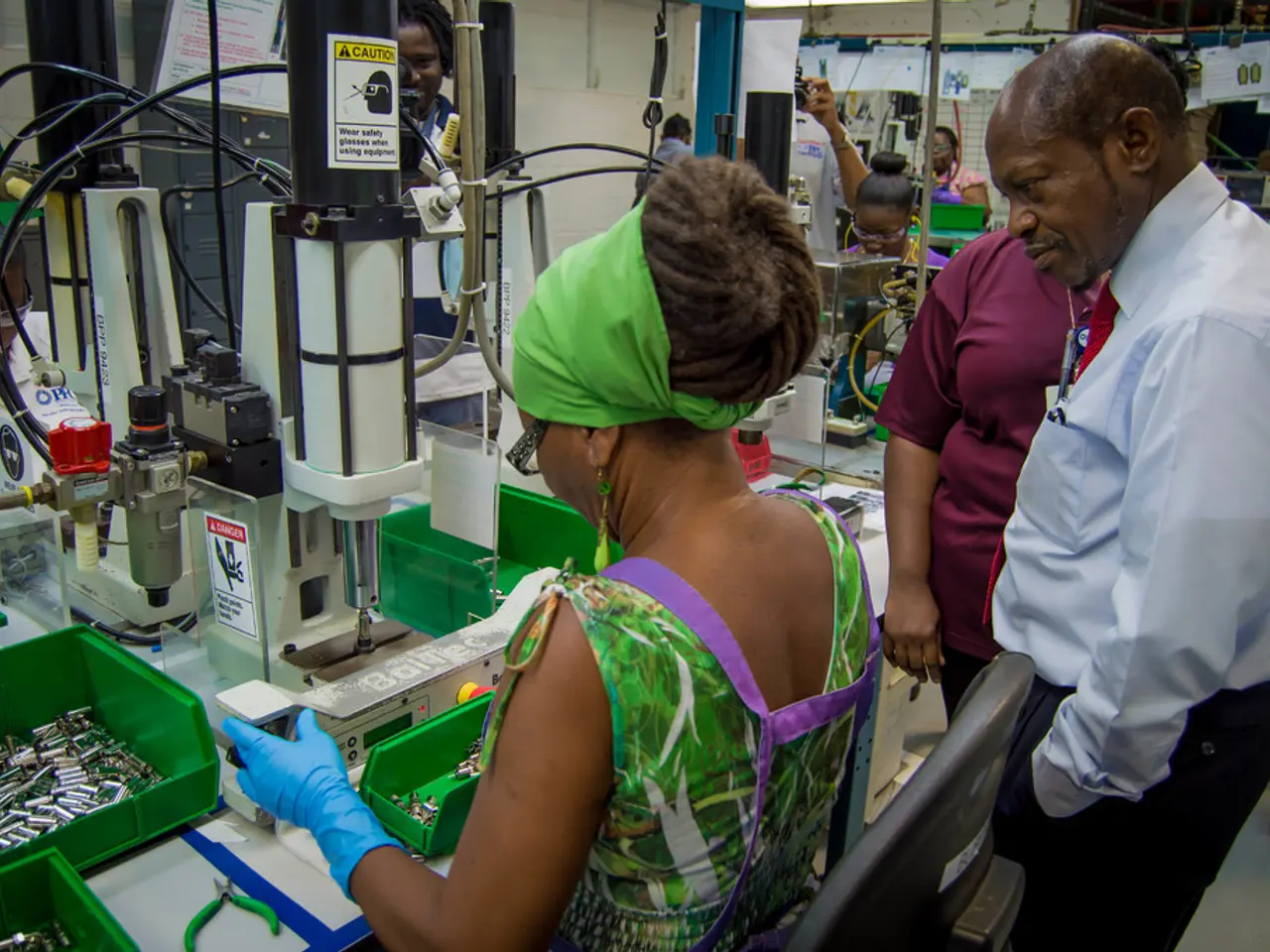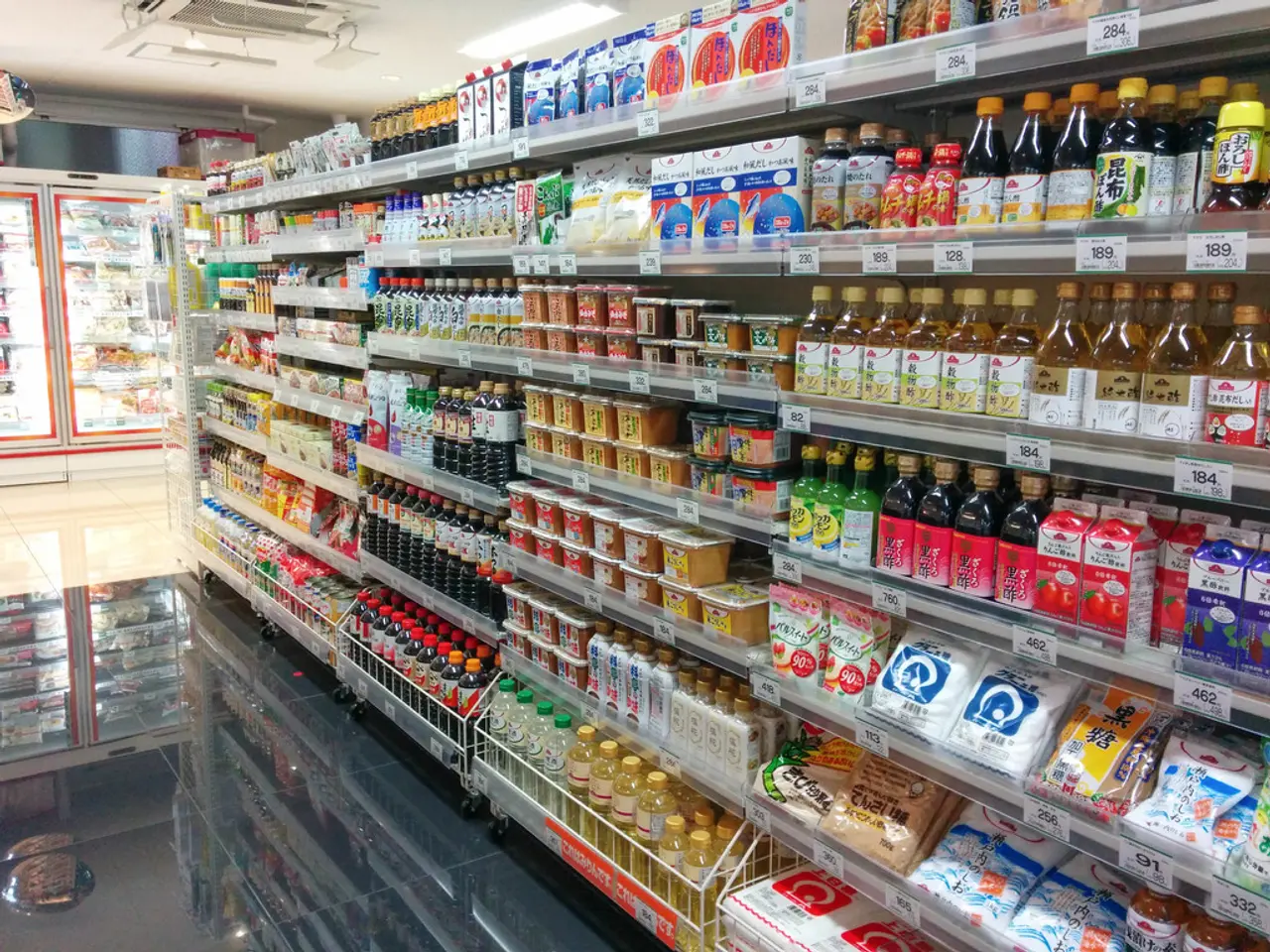Enhancing Flexibility Equals Enhanced Success
In the dynamic world of manufacturing, the pursuit of efficiency and productivity is paramount. Strategies that focus on optimizing material flow are proving to be effective, with a threefold emphasis on streamlining operations, reducing waste, and improving productivity.
One such strategy is lean manufacturing, a methodology that minimizes waste and maximizes value by employing tools like value stream mapping and Just-In-Time (JIT) production. These tools help streamline workflows, reduce unnecessary movement, and waiting times, thereby enhancing overall efficiency.
The design of factory layouts also plays a crucial role. Flow-type floor plans, which support a smooth, linear flow from raw material receipt to finished product, reduce backtracking and station overlap, thereby improving material and worker movement efficiency.
The implementation of transport rollers and mobile workstations further facilitates smooth, continuous material movement along production lines. Transport rollers enable quick and minimal effort movement of containers, boxes, and carriers from one workstation to another, while mobile workstations empower workers to bring tools and materials directly to the point of use, reducing downtime and motion waste.
Automation and AI-driven systems are also being incorporated to improve scheduling and monitoring of material flow. These systems enable real-time adjustments and predictive maintenance, helping to avoid bottlenecks and equipment failures.
Material flow analysis (MFA) is another key approach. By collecting data on material movement using RFID, barcode scanners, or automated systems, congestion and inefficiencies can be identified, and layout changes or improved handling equipment can be implemented to optimize flow.
Flexible work hours are also being recognised as a valuable tool in enhancing employee motivation and satisfaction. By offering flexible scheduling, workers gain more autonomy and a better work-life balance, leading to increased motivation, higher job satisfaction, and improved morale. This, in turn, contributes to a more productive and engaged workforce.
In manufacturing settings, flexible hours combined with optimized workflows can sustain operational efficiency while supporting employee well-being, ultimately benefiting productivity and retention. Employers can positively influence employee satisfaction by integrating flexible elements into rigid shift models, questioning traditional elements such as the summer factory shutdown, and offering employees the opportunity to switch to more environmentally friendly modes of transport with flexible working hours.
Recognizing the potential of flexibility can give a company a clear competitive advantage in winning customers and employees in the long term. Right planning, creativity, and the courage to break with established structures are key to leveraging the potential of flexibility.
In conclusion, the optimization of material flow is crucial for the economic success of any company. By implementing strategies such as lean manufacturing, flow-type floor plans, the use of transport rollers and mobile workstations, automation and AI, material flow analysis, and flexible work hours, manufacturers can streamline their operations, reduce waste, improve productivity, and create a more satisfied and engaged workforce.
In the realm of finance, investors may find significant returns by investing in manufacturing industries that prioritize efficiency and productivity. The deployment of optimized workflows, innovative factory layouts, and advanced automation technology can position such companies as market leaders.
Moreover, businesses adhering to lean manufacturing methodologies, employing AI for scheduling and monitoring, or implementing material flow analysis, often demonstrate higher productivity and lower waste levels, making them attractive investments for financiers.




